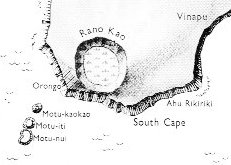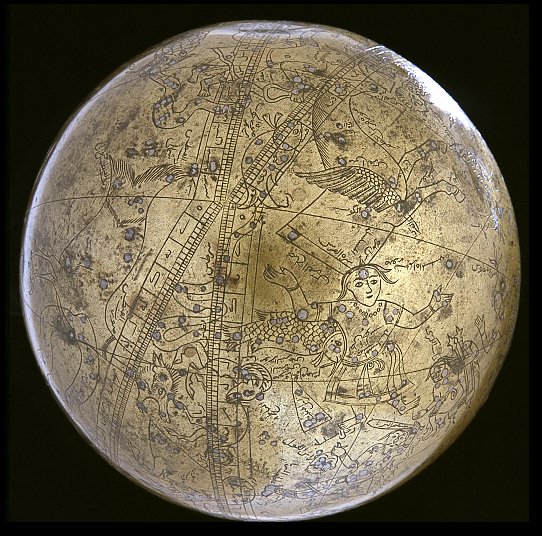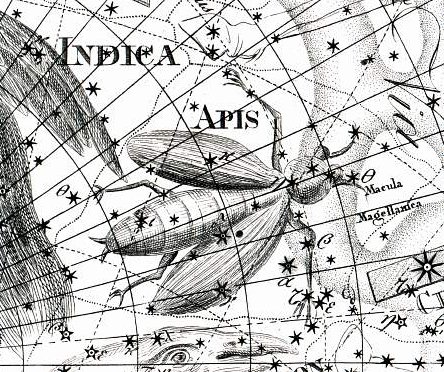89. Once again.
When the
Explorers saw
the 3 islets
outside the
southwestern
corner of Easter
Island it
could have meant
they remembered
(kai viri,
kai viri -
not forgotten)
the ancient time
when these 3 stars
at stern of Argo
Navis returned
to visibility after
having been
close to
the Sun:
|
time
of the Bull |
 |
 |
 |
 |
 |
|
Ca5-12 |
Ca5-13 (118) |
Ca5-14 |
Ca5-15 |
Ca5-16 (11 * 11) |
|
te maitaki |
te henua |
kua haga te mea ke |
manu puoko i tona ahi |
kua heu te huki |
|
Nga
Kope Ririva Tutuu Vai A Te Taanga
(=
Ξ, Χ, Ζ in ARGO NAVIS?) |
|
AZMIDISKE
(Ξ) |
Φ Gemini
(*118) |
DRUS
(χ) |
Ω Cancri |
NAOS
(Ζ) |
|
INVISIBLY CLOSE TO THE SUN (helical dates): |
|
July
16
'June
19
"June 5
MAY 13
(5-13) |
17
20
(*91)
6
(157 = 471 / 3)
14 |
18
SOLSTICE
7
(500 =
135 + 365) |
19
(200)
22 (136
+ 37)
8
(*79)
16
(136) |
20
(*121)
23
9
17
(*57) |
|
CLOSE TO THE FULL MOON (and nakshatra dates): |
|
ALTAIR
(*300) |
Φ AQUILAE |
|
Τ AQUILAE |
|
|
January 15
'December 19
NOVEMBER 12 |
16
20
13 |
17
SOLSTICE
14 |
18
22
15 |
19
(384)
23
(357)
16
(320) |
|
...
On the twenty-fifth day of the first month (Vaitu
Nui), Ira and Makoi set sail;
on the first day of June ('Maro'), the
bow of Ira's canoe touched land again.
Ira's
canoe appeared on the distant horizon, came
closer on its course, and sailed along, and
finally (one) could see the (new home) land.
The canoe reached the islets (off the coast),
and Ira saw that there were three such
islets. Ira said, 'Hey you, crew of young
men, the vision of Hau Maka, our father,
which he revealed to me, has come true. There
are 'the handsome sons of Te Taanga, who
are standing in the water', for this is the name
that the dream soul of Hau Maka gave
them.
Unforgotten (? kai viri kai viri) are
they, these three. And therefore this is the
(right) land lying there; this is Te Pito O
Te Kainga, which also received its name from
the dream soul.' (Manuscript E p. 17.) |
|
... It is known that the Polynesians navigated
by the stars. It is therefore not surprising
that names of stars are directly and indirectly
contained in some of the place names on the
list. In two cases, there is direct agreement
with the names of stars used by the Easter
Islanders: compare he kope riva with name
1. nga kope ririva ... and Te Pou
(Sirius, alpha in Canis Major) with name 8.
te pou (Barthel 1962b:2)
... |

|
14 |
Tauono |
Alcyone |
62 |
Drus (Χ) |
 |
|
May
15 (135) |
16 |
MAY
15 (135) |
|
time
of rongorongo |
time
of the Bull |
|
16 + 64 = 80 |
There was a kind of riddle in
Manuscript E, because the Explorers saw these 3 islets
outside Easter Island in 'the first day of June' and they made landfall in
'the tenth day of
the month of June', i.e. 9 days appeared to
have suddenly
vanished! The intention could have been to catch the
attention of the reader, to make him think, to make him
remember.
But after having fleetingly remembered
the time of the Bull when heliacal meant returning to
visibility the Explorers seem to have shifted their
attention back to the true heliacal dates according to
the time of Bharani.
MAY 9
(129) + 64 = July 12 (193) and 129 - 16 = *113 where
Castor and the Sun rose together. Therefore *113 - 41 =
*72 had to be "June 1 (Maro 1):
|
MAY 8 (2 * 64) |
9 (152 + 41 - 64) |
10 (130) |
11 |
12 |
13 (*53) |
 |
 |
 |
 |
 |
 |
|
Ga2-18 (2 * 24) |
Ga2-19 |
Ga2-20 (130 - 80) |
Ga2-21 |
Ga2-22 |
Ga2-23 |
|
Ghost-23 (?)
ρ Gemini (?) (112.1),
Eskimo Nebula = NGC2392 Gemini
(112.2) |
Al Dhirā'-5 (Forearm) /
Punarvasu-7 /
Mash-mashu-Mahrū-10 (Western One of the
Twins)
CASTOR
= α Gemini
(113.4) |
ANA-TAHUA-VAHINE-O-TOA-TE-MANAVA-7
(Pillar for elocution)
υ Gemini (114.0),
MARKAB (Κ
in ARGO NAVIS)
(114.7), ο Gemini (114.8),
PROCYON = α Canis Minoris
(114.9) |
α Monocerotis
(115.4), σ Gemini (115.7) |
Mash-mashu-arkū-11 (Eastern One of the
Twins)
κ Gemini (116.1),
POLLUX
= β Gemini
(116.2), π Gemini (116.9) |
AZMIDISKE
(Ξ in ARGO NAVIS)
(117.4) |
|
July 11 |
12 (193) |
13 |
14 (*115) |
15 |
16 |
|
°July 7 |
8 |
9 |
10 (*111) |
11 |
12 (193) |
|
'June 14 |
15 |
16 |
17 (*88) |
18 |
19 (*90) |
|
"May 31 |
Maro 1
(152) |
2 |
3 |
4 |
5 (*76 = *53 + 23) |
|
MAY 14 |
15 (500 = 135 + 365) |
16 (136 = 408 / 3) |
17 (402 - 265) |
18
Hanga
Te Pau |
19 (*59) |
|
Nga
Kope Ririva Tutuu Vai A Te Taanga
(=
Ξ, Χ, Ζ in ARGO NAVIS?) |
 |
 |
 |
 |
 |
 |
|
Ga2-24 |
Ga2-25 |
Ga2-26 |
Ga2-27
(π) |
Ga2-28 |
Ga2-29 (59) |
|
φ Gemini (118.4) |
DRUS (Χ
in ARGO NAVIS)
(119.9) |
ω Cancri (120.2) |
8h (121.7)
χ Gemini (121.0),
NAOS (Ζ
in ARGO NAVIS)
(121.3) |
Ρ in ARGO
NAVIS
(122.0),
HEAP OF FUEL = μ Cancri
(122.1), ζ Monocerotis (122.3), ψ Cancri
(122.6),
REGOR (Γ in ARGO NAVIS)
(122.7) |
TEGMINE
= ζ Cancri
(123.3) |
|
July 17 |
18 |
19 (200) |
20 (*121 = 11 * 11) |
21 |
22 / 7 |
|
°July 13 |
14 |
15 (196) |
16 |
17 (*118 = 4 * 29½) |
18 |
|
'June 20 |
SOLSTICE |
(200 - 27 = 159 + 14) |
23 |
ST JOHN'S
DAY |
25 (*96) |
|
"June 6 |
7 |
8 |
9 (160) |
Maro 10 |
11 |
|
... Midsummer is the flowering season of the
oak, which is the tree of endurance and
triumph, and like the ash is said to 'court
the lightning flash'. Its roots are believed
to extend as deep underground as its
branches rise in the air - Virgil mentions
this - which makes it emblematic of a god
whose law runs both in Heaven and in the
Underworld ... The month,
which takes its name from Juppiter the
oak-god, begins on June 10th and ends of
July 7th. Midway comes St. John's Day, June
24th, the day on which the oak-king was
sacrificially burned alive. The Celtic year
was divided into two halves with the second
half beginning in July, apparently after a
seven-day wake, or funeral feast, in the
oak-king's honour ... |
|
... On the twenty-fifth day of the first
month (Vaitu Nui), Ira and
Makoi set sail; on the first day of June
(Maro), the bow of Ira's canoe
touched land again.
Ira's
canoe appeared on the distant horizon, came
closer on its course, and sailed along, and
finally (one) could see the (new home) land.
The canoe reached the islets (off the
coast), and Ira saw that there were
three such islets. Ira said, 'Hey
you, crew of young men, the vision of Hau
Maka, our father, which he revealed to
me, has come true. There are the handsome
sons of Te Taanga, who are standing
in the water, for this is the name that the
dream soul of Hau Maka gave them.
Unforgotten (? kai viri kai viri) are
they, these three. And therefore this is the
(right) land lying there; this is Te Pito
O Te Kainga, which also received its
name from the dream soul.'
He ui a Ira.ko te motu etoru.he ki a Ira.he
ro korua e kau a repa e ku ketu ana te
urunga.a Hau maka o to tatou matua.i hakahi
mai ai kia au.ko nga kope ririva tutuu vai a
te taanga.te ingoa o te motu ena etoru i
nape ai e te kuhane o Hau maka.
Ira saw that there were three such islets.
(E:17)
Makoi named the
place Hanga Te Pau, 'the landing site
of Ira'. So that they would remember
(? he aringa, literally, 'as face'),
the open side of Hanga Te Pau was
given this name. Ira got up. They all
climbed to the top of the hill. They climbed
up on the tenth day of the month of June 'Maro'. |
|
.jpg) |
|
... Gamma Velorum (γ
Vel, γ
Velorum) is a star system in the
constellation Vela. At magnitude +1.7, it is
one of the brightest stars in the night sky.
It has the traditional names Suhail
and Suhail al Muhlif, which
confusingly also apply to Lambda Velorum. It
also has a more modern popular name Regor,
which was invented as a practical joke by
the Apollo 1 astronaut Gus Grissom for his
fellow astronaut Roger Chaffee. Due to the
exotic nature of its spectrum (bright
emission lines in lieu of dark absorption
lines) it is also dubbed the 'Spectral Gem
of Southern Skies' ... |
At the time of rongorongo the star
position 115 days after 0h was at α in the Unicorn, and possibly this was
what Manuscript E meant by Taanga (alluding
to Taranga the mother of Maui at
Sirrah, the
Navel of the Horse, who was rising 115 days
earlier):


...
'From the time I was in your womb,' Maui went
on, 'I have known the names of these children of
yours. Listen,' he said as he pointed to his
brothers in turn. 'You are Maui mua, you are
Maui roto, you are Maui taha, and you
are Maui pae. And as for me, I am Maui
potiki, Maui-the-last-born. And here I
am.' When he had finished, Taranga had to
wipe her eyes because there were tears in them, and
she said: 'You are indeed my lastborn son. You are
the child of my old age. When I had you, no one
knew, and what you have been saying is the truth.
Well, as you were formed out of my topknot you can
be Maui tikitiki a Taranga.' So that became
his name, meaning Maui-formed-in-the-topknot-of-Taranga.
And this is very strange, because women in those
days did not have topknots. The topknot was the most
sacred part of a person, and only men had them
...
At the time of the Bull the Navel of
the Horse had returned to visibility in JANUARY 16 = 16
days after DECEMBER 31:
|
JANUARY 15 (*300) |
16 |
17 |
18
(383) |
 |
 |
 |
 |
|
Gb6-25 (229 + 178) |
Gb6-26 (408) |
Gb6-27 (180) |
Gb6-28 |
 |
 |
 |
 |
|
Gb3-10 (300) |
Gb3-11 |
Gb3-12 (73) |
Gb3-13 (181 - 107) |
|
θ Oct. (364.4) |
Al
Fargh al Thāni-25
0h (365.25)
CAPH = β Cassiopeiae,
SIRRAH
(Navel of the
Horse) = α Andromedae
(0.5), ε Phoenicis, γ³
Oct. (0.8) |
Uttara Bhādrapadā-27
/
Wall-14
ο Oct. (1.3),
ALGENIB PEGASI
= γ Pegasi
(1.8) |
χ Pegasi (2.1),
θ Andromedae
(2.7) |
|
March 20 |
21 (0h) |
22 (*1) |
23 (82) |
|
°March 16 (*360) |
17 |
18 (77) |
19 |
|
'February 21 |
22 (53) |
TERMINALIA |
24 (*340) |
|
"February 7 (403) |
8 (*324) |
9 |
10 (41) |
|
NAKSHATRA DATES: |
|
JULY 17 (*118)
|
18 |
19 (200) |
20 |
|
12h (182.6)
ο Virginis
(182.1), η Crucis
(182.5) |
ALCHITA
= α Corvi,
MA WEI (Tail of the
Horse)
= δ Centauri
(183.1),
MINKAR = ε Corvi
(183.7), ρ Centauri
(183.9) |
PÁLIDA = δ Crucis
(184.6),
MEGREZ = δ Ursae Majoris
(184.9) |
Hasta-13 /
Chariot-28
GIENAH
= γ Corvi(185.1),
ε Muscae
(185.2), ζ Crucis
(185.4),
ZANIAH = η Virginis
(185.9) |
|
September 19 (*182) |
20 |
21 (264) |
EQUINOX (*185) |
|
°September 15 (*178) |
16 |
17 (260) |
18 |
|
'August 23 (*155) |
24 (236 = 8 * 29½) |
25 |
26 |
|
"August 9 |
10 (222) |
11 |
12 (*144) |
 |
 |
 |
 |
|
Ga5-8 (118) |
Ga5-9 |
Ga5-10 |
Ga5-11 |

|







.jpg)










